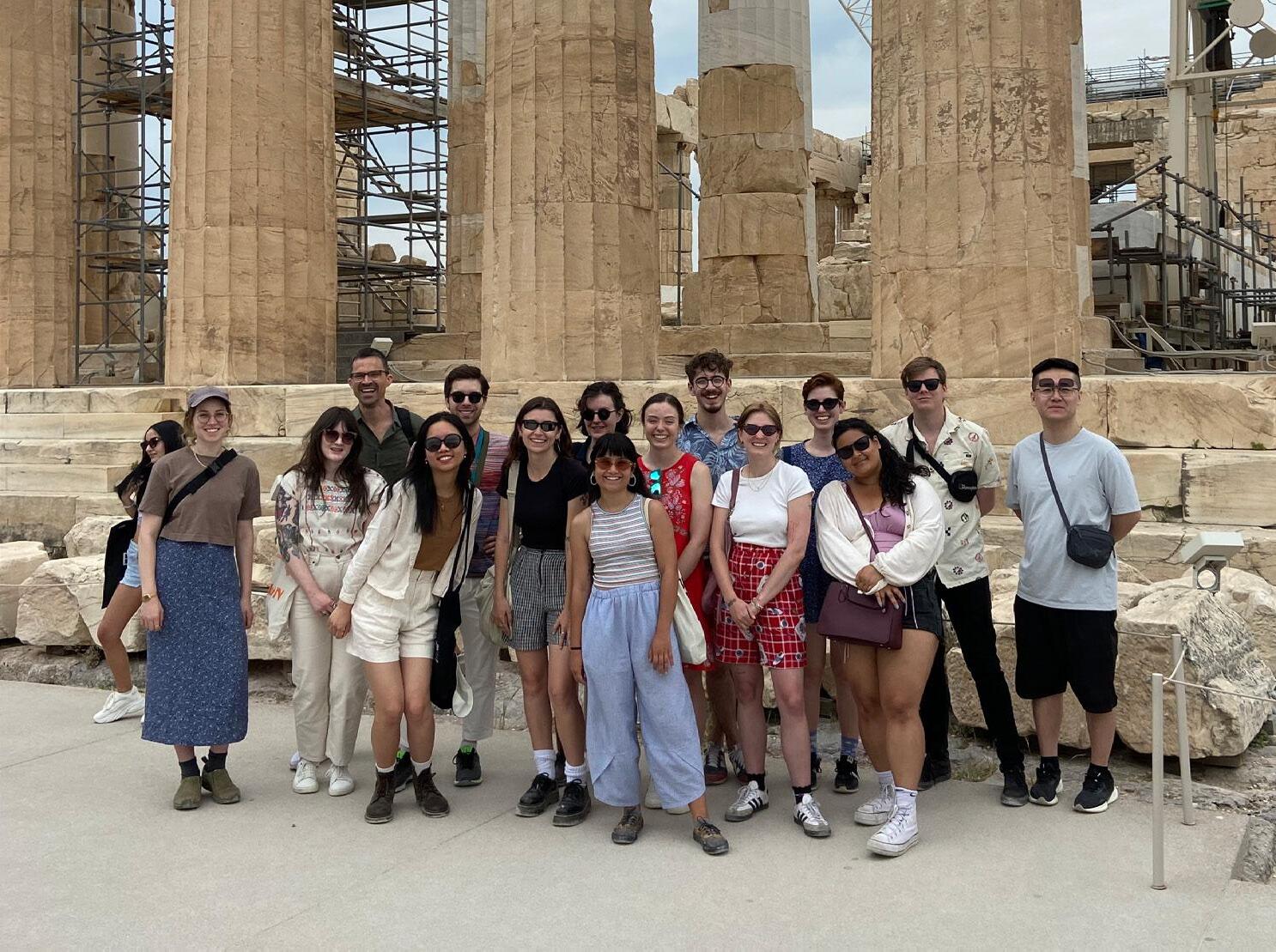
2 minute read
Bard Graduate Center Field School in Archaeology and Material Culture
In its second year, the field school in archaeology and material culture was again offered on the Cycladic island of Antiparos and the adjacent island Despotiko, where students participated in a project to excavate and rebuild the sixth-century BCE sanctuary of Apollo. Professor Caspar Meyer, who has been working on the sanctuary site since 2017, leads the field school. All first-year BGC students have the opportunity to add the field school to the existing BGC travel program to Berlin and Paris. This year, thirteen students participated in the program.
The region exported marble to centers like Athens—some of the earliest statues from the Acropolis were made of Parian marble—and current work on the site contributes to our knowledge of the material’s enduring cultural significance. Since its discovery in the early 2000s, the sanctuary on Despotiko has produced an uninterrupted string of finds, including votive deposits under the temple floor and domestic buildings pre-dating the sacred structures. The site has become key to understanding the connections between seafaring, craft, and religion that shaped Greek culture for centuries.
Advertisement
Students spent two days visiting significant ancient sites and museums in Athens and then traveled to Antiparos for six days of work and study. Each morning, students crossed a small channel to Despotiko to work on the excavation site until the afternoon. Evenings were dedicated to building an outdoor kiln for making clay ceramics under the guidance of an expert in ancient potting techniques. This unique opportunity in the handcraft behind the pottery fragments found at the site facilitated an understanding of object interpretation and reconstruction.
The purpose of a field school is to take students out of the classroom so they can test what they have learned there against practical, firsthand experiences. Students are confronted with the unpredictability of unearthing, cleaning, and identifying an object, as well as subsequent collaboration required to archive, conserve, and reconstruct an object that may eventually find its way into a museum display.
Student participation in the BGC Field School in Archaeology and Material Culture was made possible in part by the generous support of the Malcolm Hewitt Wiener Foundation, Inc.

Andrew Morrall
Two courses stand out from the teaching year: “The Arts of the Tudor Court,” which took full advantage of the Metropolitan Museum of Art’s exhibition of the same title, as well as the generosity of the Met’s curators in introducing students to different aspects of the show; and “The Culture of Craft in the Era of the Kunstkammer.” Both produced some satisfyingly original student papers.
The past year saw a number of articles go to press, including “Turning Back the Sun: Christoph Schissler’s Horologium Achaz as Kunststück,” and “Nuremberg Goldsmiths and the Mathematizing of Nature.” Both will appear in Nuncius Series. Studies and Sources in the Material and Visual History of Science. Another essay, “Ideas,” will appear in A Cultural History of Collecting in the Renaissance, part of Bloomsbury’s Cultural History series; and a review of Jan De Maeyer and Peter Jan Margery’s Material Change: The Impact of Reform and Modernity on Material Religion in North-West Europe, 1780–1920, will appear in Church History: Studies in Christianity and Culture

During the summer of 2022, I undertook research in Vienna on the visionary ambitions of the splendidly named Hugo Blotius, the first imperial librarian to the Habsburg court, to found a combined museum, library, and research center dedicated to the assembly of total human knowledge. This resulted in a preliminary talk, “Hugo Blotius’s
Musaeum Generis Humani and the Ideal of Universal Knowledge,” at a conference at the University of Oregon in October 2022. It was the second of three conferences (the first was at BGC in 2018), of a larger research project: “Prudence, Techne, and the Practice of Governance in the Early Modern Kunstkammer,” which explores the political relationship between statecraft and collecting.
In July 2023, I gave a paper on “Dürer and the Materiality of Vision” in a workshop that forms part of a research project, “Albrecht Dürer’s Material World – in Melbourne, Manchester and Nuremberg.” The workshop was hosted by Manchester University, United Kingdom, in conjunction with an exhibition at the Whitworth Gallery, Albrecht Dürer’s Material World.










